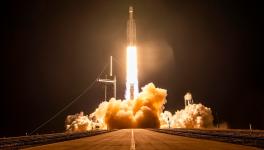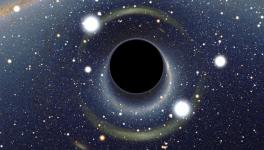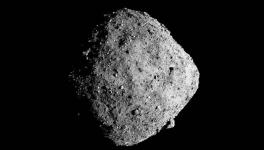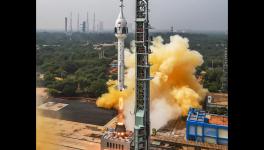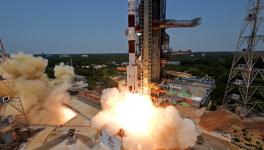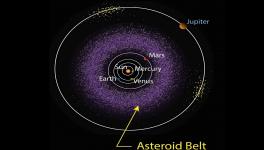Aditya L-1 Mission: How far From Earth Will it fly, and What are its Destination and Aims?
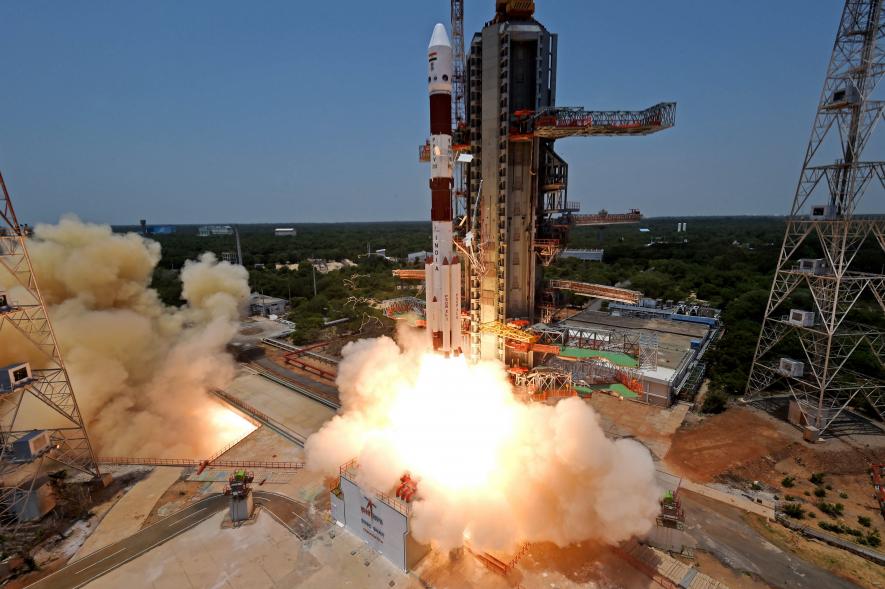
ISRO's launch vehicle PSLV-C57 rocket carrying India's first solar mission, 'Aditya-L1', lifts off from the Satish Dhawan Space Centre, in Sriharikota, Saturday, Sept. 2, 2023. Image Courtesy: PTI
The first space-based Indian mission to study the Sun, the Aditya L-1 mission, was launched on September 2 from the Satish Dhawan Space Center at Sriharikota, Andhra Pradesh. With it, India has secured a place among the few countries that endeavoured Sun exploration.
The Destination of Aditya L-1
Aditya L-1 is a satellite dedicated to conducting a comprehensive study of the Sun. It was launched with the help of the rocket PSLV-C57. The PSLV (Polar Satellite Launch Vehicle) is a launch vehicle of India, successfully launched in October 1994 for the first time.
On September 2, the PSLV-C57 took Aditya L-1 off successfully. After a flight duration of 63 minutes and 20 seconds, the Aditya L-1 spacecraft was successfully injected into an elliptical orbit of 235x19500 km around the Earth, according to ISRO (Indian Space Research Organisation).
The destination of Aditya L-1 is a point known as the L-1 point, and it will reach there within a time of 110 days. Aditya L-1 will revolve around the Earth for 16 days to gain the velocity required to accomplish its journey. During this period, the satellite will be confined to Earth-bound orbits and shall undergo five maneuvres in total. The latest manoeuvre has been reported to be done on September 5.
Spacecraft manoeuvre is the changing of the orbit by using the propulsion systems.
What is L-1?
L-1 stands for Lagrange Point 1. The Lagrange point is the location in space where the gravitational points of two celestial bodies cancel out each other. This means that an object kept at such a point will become relatively stable concerning both celestial objects.
NASA (National Aeronautics and Space Administration) writes about Lagrange Points, “Lagrange points are positions in space where objects sent there tend to stay put. At Lagrange points, the gravitational pull of two large masses precisely equals the centripetal force required for a small object to move with them. These points in space can be used by spacecraft to reduce fuel consumption needed to remain in position.”
There are five such Lagrange points for the Sun-Earth system, which is depicted in the following image of NASA—
The five Lagrange Points of the Sun-Earth system. Image Source NASA.
The L-1 point is important for the Sun-Earth system. It provides an uninterrupted view of the Sun, and for this reason, L-1 is now the point in space for four other spacecraft circling it. Aditya L-1 becomes the fifth.
How far From Earth Will Aditya L-1 Stay?:
Aditya L-1 will stay at a distance of nearly 1.5 million km from the Earth. It is directed towards the Sun; the distance it stays from Earth is just 1% of the total Earth-Sun distance. From here, Aditya L-1 will study the outer atmosphere of the Sun.
It will not approach the Sun any closer from this distance, nor will Aditya L-1 ever land on the Sun.
Image Source: ISRO.
What Aditya L-1 Aims For?
Aditya L-1 has several scientific objectives to accomplish after reaching its destination.
It aims to examine the Sun’s corona, the outermost atmosphere of the Sun and its heating mechanism. The mission also aims to get into the physics of the CME (Coronal Mass Ejection), which is the expulsion of electrons, ions and magnetic field from the corona.
The mission also aims to study the chromosphere, the second layer of the Sun’s corona. Apart from these, Aditya L-1 will also attempt to study the “drivers for space weather (origin, composition and dynamics of solar wind,” as per ISRO.
Payloads in Aditya L-1
The Indian solar mission is equipped with seven payloads or instruments. For corona imaging and spectroscopy, the payload is VELC (Visible Emission Line Coronagraph). The SoLEXS, or the Solar Low Energy X-ray Spectrometer, is the payload for observing the Sun as a star. It is a soft X-ray spectrometer. It is accompanied by a hard X-ray spectrometer named HEL1OS (High Energy L1 Orbiting X-ray Spectrometer), which also aims to observe the Sun as a star.
The SUIT, or the Solar Ultraviolet Imaging Telescope, is dedicated to imaging the photosphere and the chromosphere.
The other three payloads are dedicated to in-situ (experiments in a real situation) analyses like analysing solar wind and particle and in-situ magnetic field analysis. These are ASPEX (Aditya Solar Wind Particle Experiment), PAPA (Plasma Analyser Package For Aditya) and Advanced Tri-axial High-Resolution Digital Magnetometers.
Get the latest reports & analysis with people's perspective on Protests, movements & deep analytical videos, discussions of the current affairs in your Telegram app. Subscribe to NewsClick's Telegram channel & get Real-Time updates on stories, as they get published on our website.










